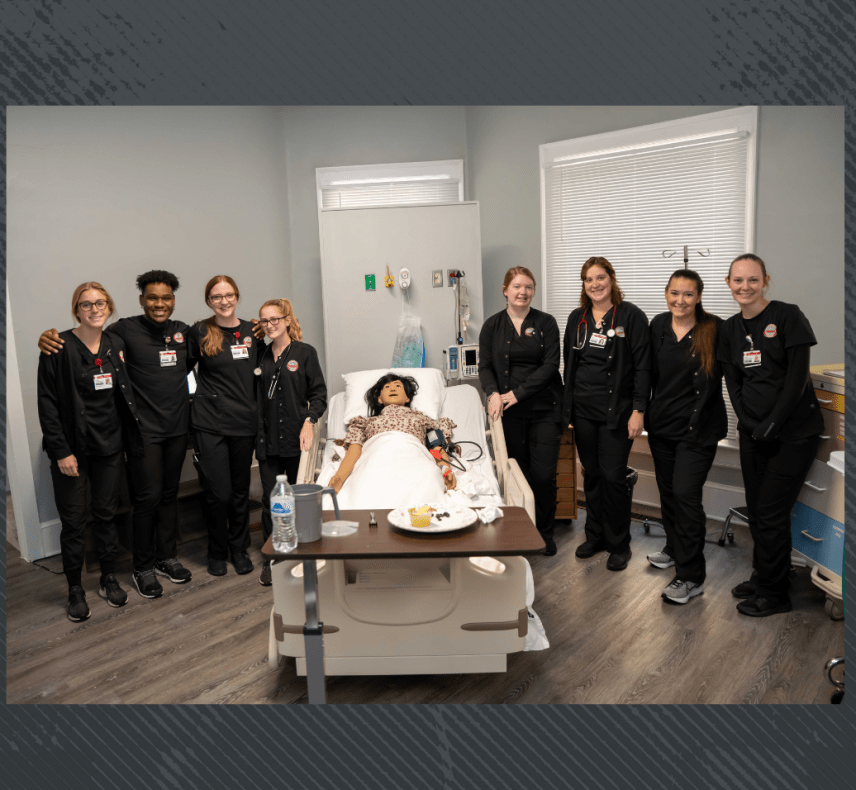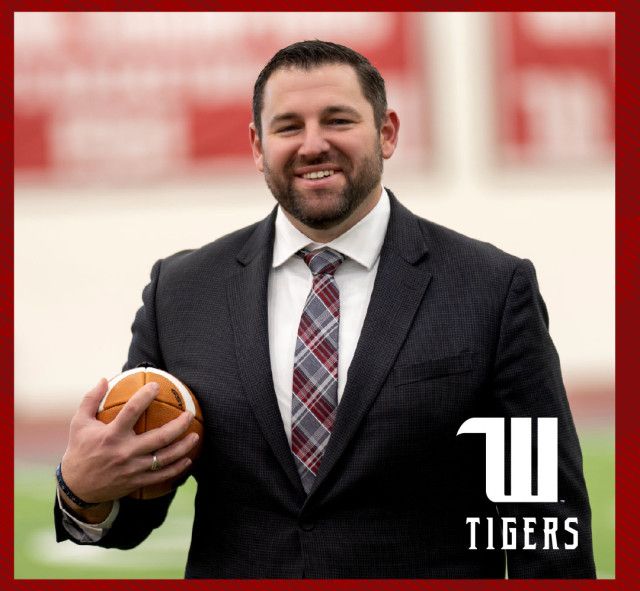Part of preparing students to be the best they can be in their fields of study is to offer them real-world experiences before they graduate from Wittenberg.
Wittenberg’s Department of Nursing does this daily, offering ‘realism’ through the simulation laboratory at the Barbara Deer Kuss Science Center and now through the newly renovated simulation house located at 29 West Ward Street near Ferncliff Hall.
“In the simulation house, the students take part in active learning related to community health, critical care, mother/baby, pediatrics, and psychiatric nursing,” said Stacy Gilson, nursing resource center and simulation laboratory coordinator at Wittenberg. “They practice skills, learn how to properly utilize equipment, and take part in simulations. Our primary goal with the nursing skills lab and the simulation house is realism. We want our students to experience as much as possible in a safe learning environment prior to graduating and becoming licensed nurses. The students remember lessons learned in this low-stakes, safe environment and are able to carry that with them when they move on to higher-stakes patient care.”
The simulation house on campus belongs to the University and was formerly used as temporary housing accommodations for employees. However, in light of the continuing growth of the University’s popular nursing program, it became harder to schedule time for all of the students in the simulation laboratory. Wittenberg’s Bachelor of Science in Nursing Program was recently endorsed by the Ohio Board of Nursing, and the spring graduating cohort was 22 students. The program now has 110 students in total with 47 freshmen, 28 sophomores, 19 juniors, and 16 seniors.
“Sophomores, juniors, and seniors are all take nursing classes, which include a didactic, lab, and clinical component; therefore, we often have days on which multiple groups are scheduled to learn different skills or concepts or to participate in simulation,” Gilson said. “Part of the code of ethics for simulation is confidentiality – mainly so students can feel comfortable making mistakes, and we can maintain a safe learning environment for them and, secondly, so that the younger students can experience a simulation with fresh eyes just as their upperclassmen counterparts are able to do. Having the sim house allows us to schedule multiple groups on the same day without violating that confidentiality agreement. It also allows us the physical space needed to accommodate so many students.”
The nursing program acquired the simulation house during the COVID-19 pandemic, which was especially helpful in allowing the instructors enough space to be able to maintain appropriate social distancing while still teaching in person, which many nursing programs across the country were unable to do. At first though, the house was maintained only with its original lighting and electrical, which didn’t accommodate for the program’s current electronic devices for simulation, including mannequins, cardiac monitors, tablets, computers, etc. But that problem was resolved.
“Originally, the electrical and lighting were updated on the first floor to accommodate use, and we simply did not use electronics upstairs,” Gilson said. “Earlier this year, Dan McDermott (director of Facilities Management) recognized a need to upgrade the electrical throughout the house to provide the best use of space and also had the team provide some much-needed upgrades to the floors, walls, etc., which was SO appreciated! We love having the sim house as a part of our program and have really enjoyed being able to work it into our curriculum.”
On the first floor of the house, the kitchen is utilized as a ‘staging area’ for simulations. Then there is a conference room for pre-brief and de-brief, a living room, where observers are during a simulation, and a large patient care room that can be used for critical care, mother/baby, or psychiatric simulations depending upon which learning objectives are the focus for the day. On the upper level of the home is a second conference area, a neonatal intensive care unit (NICU) patient care room with a baby mannequin, patient crib, and other devices, along with a pediatric patient care room with a six-year-old mannequin.
Currently nursing students do not have scheduled times at the simulation house until their junior and senior year, but at the end of their sophomore year, they are introduced to the house during a fun activity.







